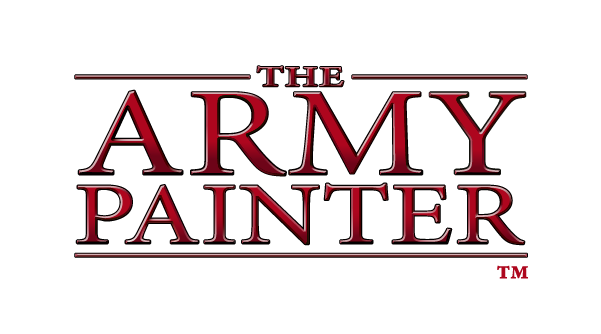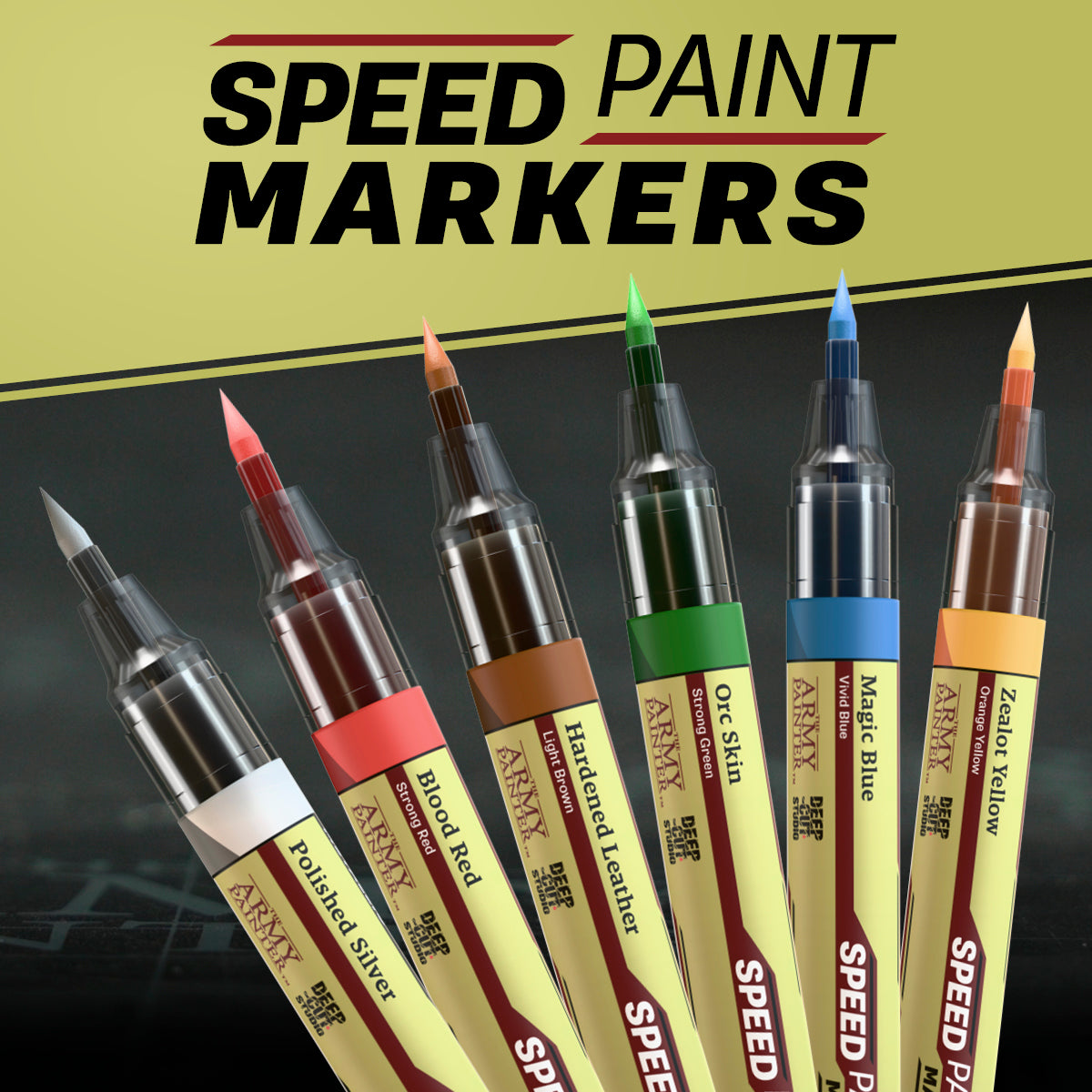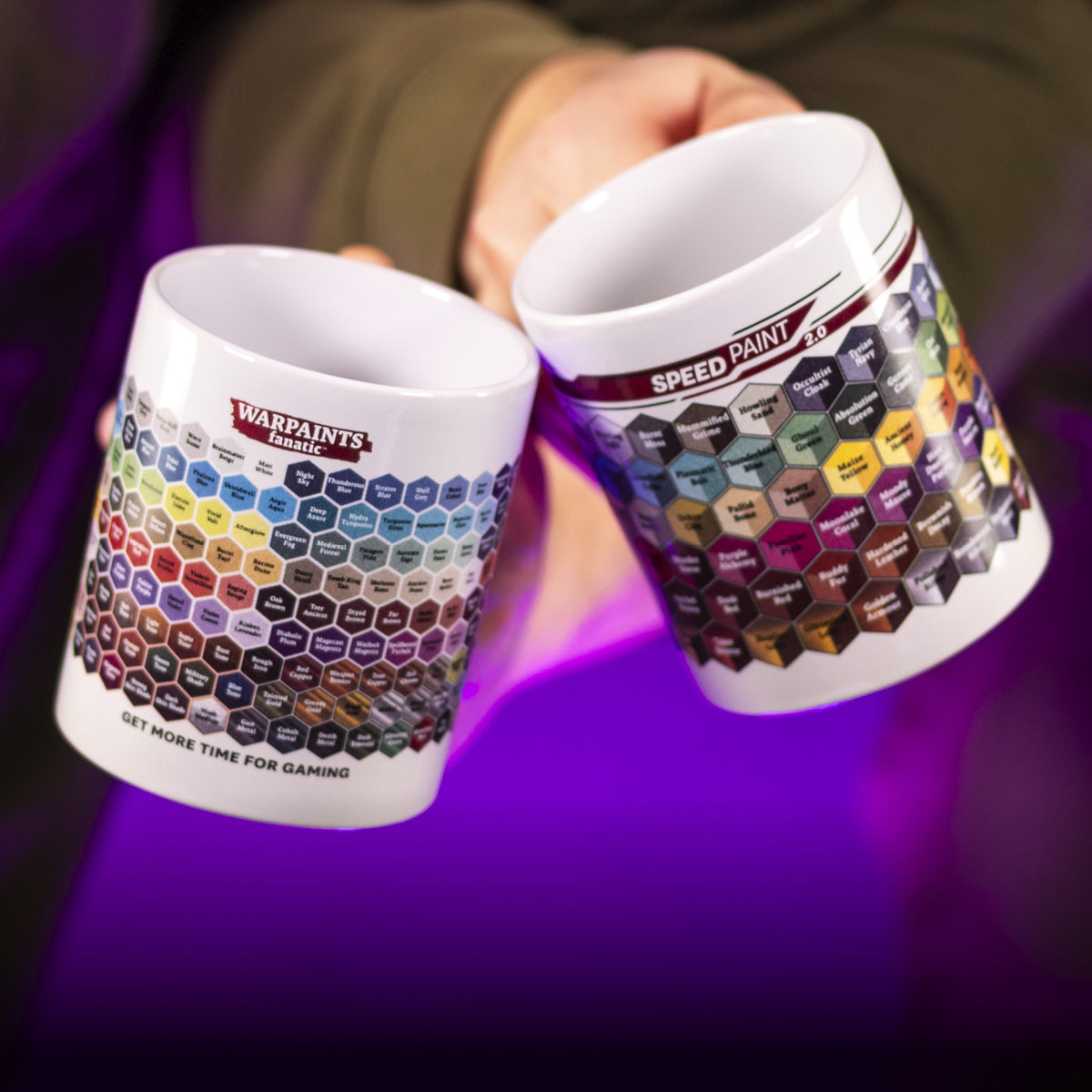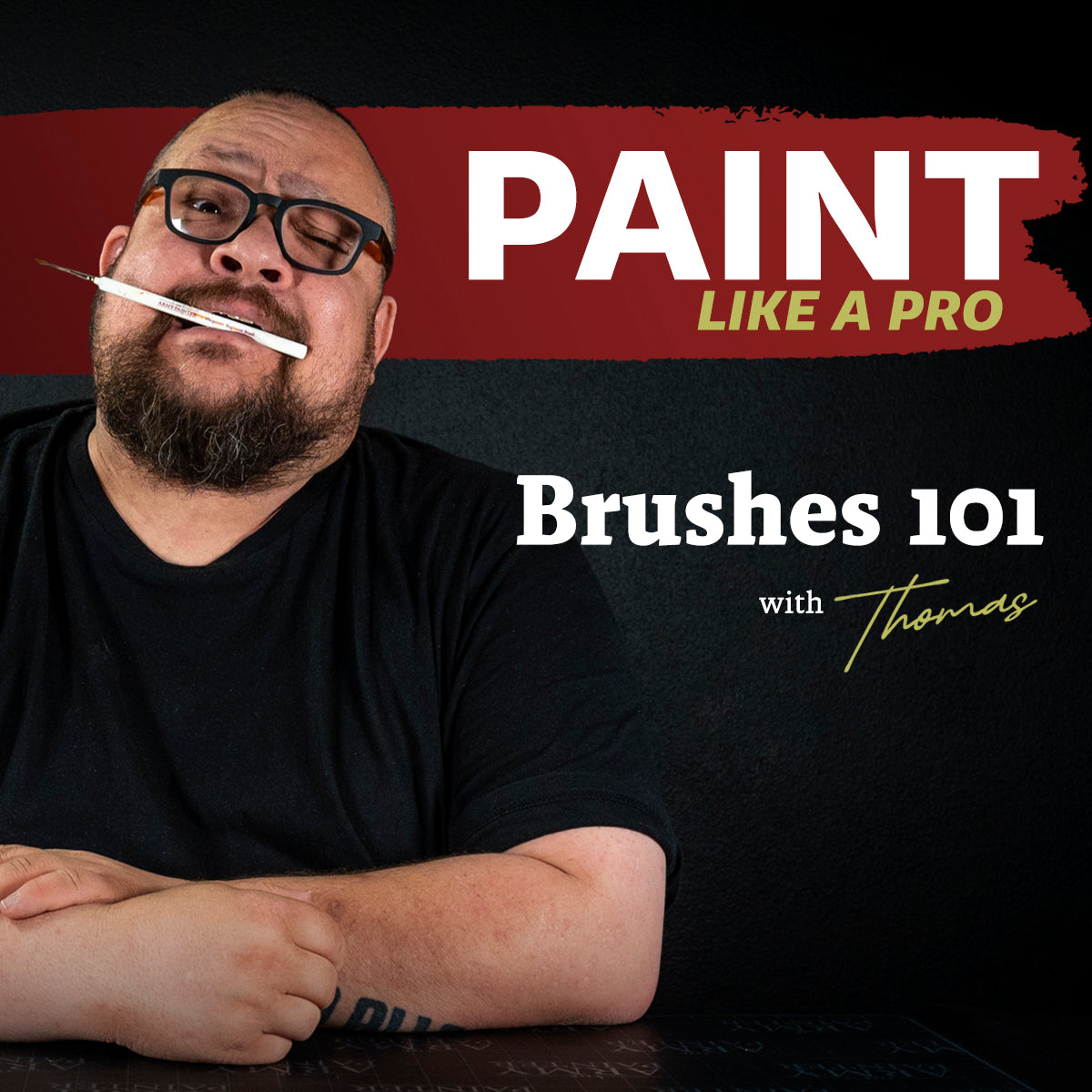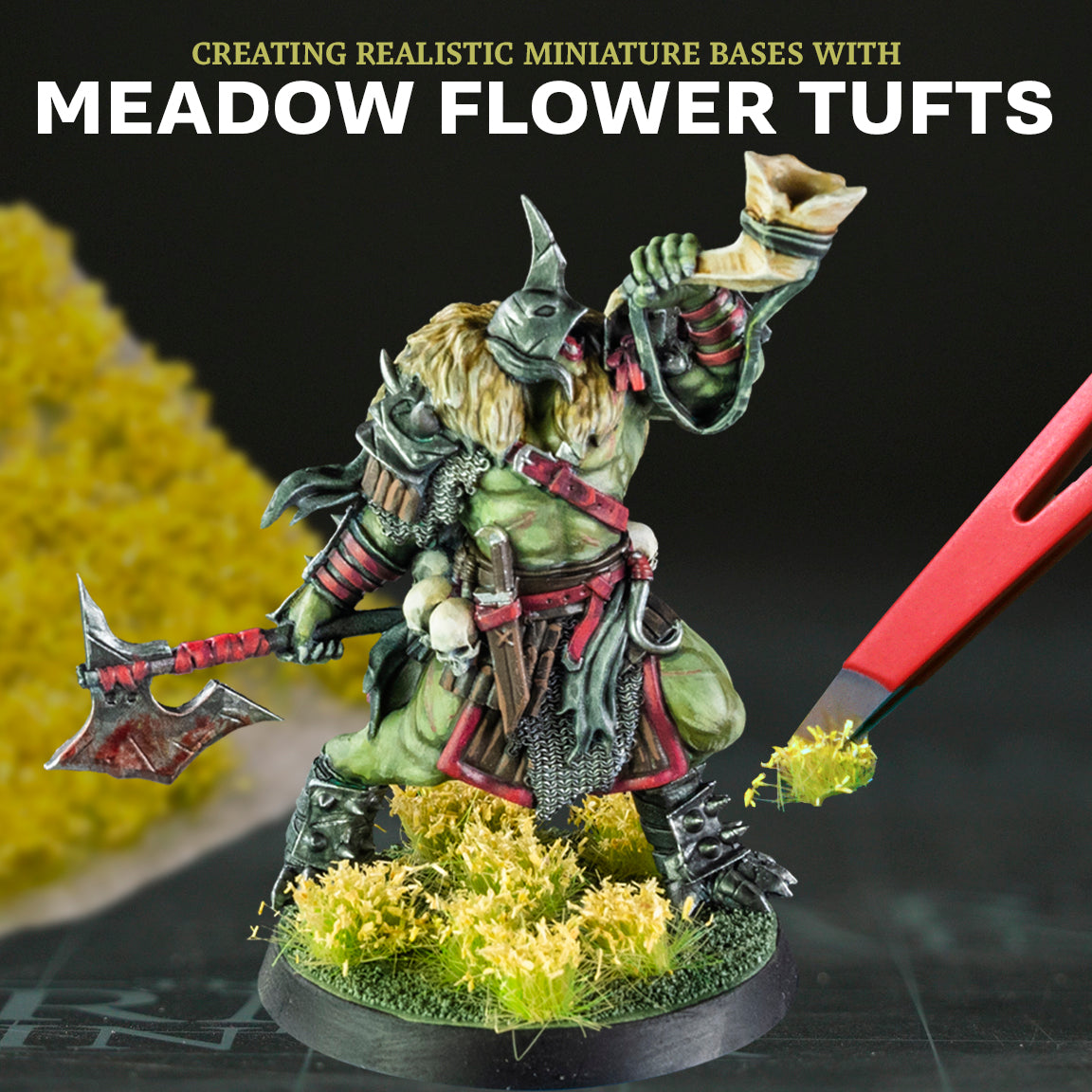Welcome to our second entry of Paint Like a Pro, a series in which our studio painters, Thomas and Steffen, share their top tips on various subjects related to miniature painting with you!
If you missed the inaugural round of Paint Like a Pro, where Steffen shared 10 tips for your first paint setup and the essential equipment you need when starting out, you can find it here: Paint Like a Pro: 10 Tips for Beginner Must-Haves.
As Steffen mentions in the first “Paint Like a Pro”, having good brushes and a selection of different types and sizes for your various tasks is essential. But what else should you know about brushes? What should you know when purchasing them, and how many should you have?
Today, Thomas shares 10 insights about brushes you should know!
A Guide to Understanding Brushes
Tip 1: The Right Brush for the Right Job

If you are new to the hobby, you may not have given too much thought to how your brush choice should depend on the task or technique you are painting.
As the different brushes are all individually useful for different techniques, selecting the right brush for the task at hand plays a big role and is essential for achieving the best results.
The size and shape of a brush determines its suitability for various painting tasks. Large brushes (i.e., Wargamer Brush: Regiment and Wargamer Brush: Monster) are ideal for painting larger areas or applying broad sweeps of colour because they can hold more paint and allow for efficient coverage of larger surfaces on minis such as capes or mounts.
Conversely, when painting intricate details like eyes, belt buckles, or small armour patterns, a Wargamer Brush: Detail is indispensable. Such brushes are designed with fine tips and smaller bristles to offer the precision required for such meticulous work.
To help you select the right brush, we have named our brushes to reflect their intended use. For instance, a Wargamer Brush: Regiment is perfect for painting regiments, while a Wargamer Brush: Detail is perfect for details.
Tip 2: How Many Brushes Do You Need?

Again, if you are new to the hobby, my recommendation would be to get around 4-5 brushes of various sizes. With brushes such as a detail brush, a regiment brush, a monster brush, and a drybrush, you are well-equipped to start your painting journey.
As you grow more experienced and want to try out different techniques, you may find it beneficial to add more specialised brushes to your toolkit, like a Detail Brush and a Vehicle & Scenery Brush.
Tip 3: What to Keep in Mind When Buying Brushes

When buying brushes, I think the adage, “you get what you pay for”, holds true.
Although more expensive brushes generally have better longevity and performance, synthetic brushes have improved a lot as well.
If you are unsure whether miniature painting is for you, I would consider starting with more affordable options, such as The Army Painter’s Hobby Starter Brush Set. Once you've caught the mini painting bug you can start investing in higher-quality brushes.
Tip 4: Treat Your Brushes Right

It’s very important to treat your brushes right as doing so can significantly extend their lifespan and efficiency. Here are three things someone new to the miniature painting hobby might not know about brush-treatment and care.
First, avoid getting paint on the ferrule - the metal part of the brush that connects the bristles to the handle. If paint seeps into the ferrule, the paint hardens and causes the bristles to splay outwards. The best way to avoid this is to always use just the tip of the bristles when getting paint.
Second, never use hot water to clean your brushes. The glue that holds the bristles together can soften under high temperatures, leading to bristle loss and a frayed brush tip. Always opt for cold or lukewarm water. For a deeper clean, especially when removing stubborn paint residues, you can get a dedicated brush soap, or a gentle dish soap (sulfo) can be effective. However, ensure the water temperature is still cold or lukewarm.
Third, after cleaning your brush, it’s crucial you let it dry. I always lay my cleaned brush horizontally on a towel to dry. Don’t place the brush bristle-down in a jar or cup; this can cause water to seep into the ferrule, potentially weakening the glue and leading to bristle loss. Furthermore, moisture can promote decay in brushes with natural hairs, especially in humid environments. Once dry, I store my brush with the bristles pointing upwards. This prevents the bristles from becoming bent or distorted, which can happen if brushes are stored with pressure on the bristles.
Tip 5: Proper Brush Technique – Be Gentle and Don’t Press

A common misconception among novice painters is the belief that to apply paint, you must press the brush against the figure. But this approach risks damaging the brush, its longevity and performance.
It’s more effective to thin your paints with water or our Warpaints Stabilizer and let it flow from the brush as you gently brush over the surface.
By doing so, you not only prevent damage to your brush but also get a smoother and more even coat of paint on your miniature.
Tip 6: Don’t Throw Away Damaged Brushes

My next tip is to keep your old, worn-out brushes, as they can be used for times where precision is less critical.
For instance, I keep some of my old brushes that aren’t “sharp enough” for detail work and use them for mixing colours on my Wet Palette. That way, I also “protect” my good brushes from premature wear and tear.
Old brushes are also useful for applying special effects such as weathering or creating blood effects. The old brush’s frayed and splayed bristles can be manipulated further to enhance these effects. Sometimes I cut the bristles, so they splay out in multiple directions, creating more random and natural patterns that perfectly simulate the randomness of weathering or the splatter of blood.
So, instead of throwing away the damaged and worn-out brushes, I save them and repurpose them as specialised tools in my painting arsenal for specialised techniques and effects.
Tip 7: How to Clean Your Brush

As mentioned previously, it’s important you treat your brushes right and clean them properly in cold or lukewarm water.
I recommend having two separate cups of water when you’re cleaning your brushes: one for metallic paints and one for non-metallic paints.
Metallic paints contain tiny metal flakes that give them their characteristic shimmer. When cleaning a brush that has been used with metallics in water, these flakes will disperse. If you then use the same water to rinse your brushes used with non-metallic paints, you may unintentionally transfer these metal flakes to your non-metallic colours.
Tip 8: Use a Flat Drybrush for Large Surfaces

The two flat drybrushes, Wargamer: Large Drybrush and Wargamer: Small Drybrush, in The Army Painter’s catalogue are extremely good for painting large areas.
The shape of the brushes makes them particularly effective for tackling broad surfaces, such as tanks and other large models. The flat design allows for even distribution of paint, which helps in achieving a smooth, uniform finish on large, flat areas, compared to smaller brushes which can leave streaks and brushstrokes.
Tip 9: Have More Brushes of The Same Kind

Although mentioned previously in Tip 2 that you only need 4-5 different kinds of brushes, my experience is that the more you start experimenting with different techniques, the more brushes of the same kind you’ll need.
For example, when blending and making transitions on minis, I typically use two brushes of the same kind. This makes it easier and my painting more efficient.
Tip 10: Roll, Don’t Lick - The Smarter Way to Sharpen Your Brush

Many miniature painters, especially those who have been in the hobby for a while, have the habit of “brushlicking” to effectively make their brush pointy again.
My advice is to roll the brush on a damp cloth or paper towel instead of using your mouth. This action helps bring the bristles together into a sharp point again and is an equally effective technique.
Give Your Brushes the Love they Deserve
When you know how to properly choose, use, and care for your brushes, they will last longer and make it easier to master your craft. Check out an overview of all The Army Painter’s brushes in our guide, A Brush for Every Job, here.
Stay tuned for more tips and tricks in our next edition of "Paint Like a Pro"!
